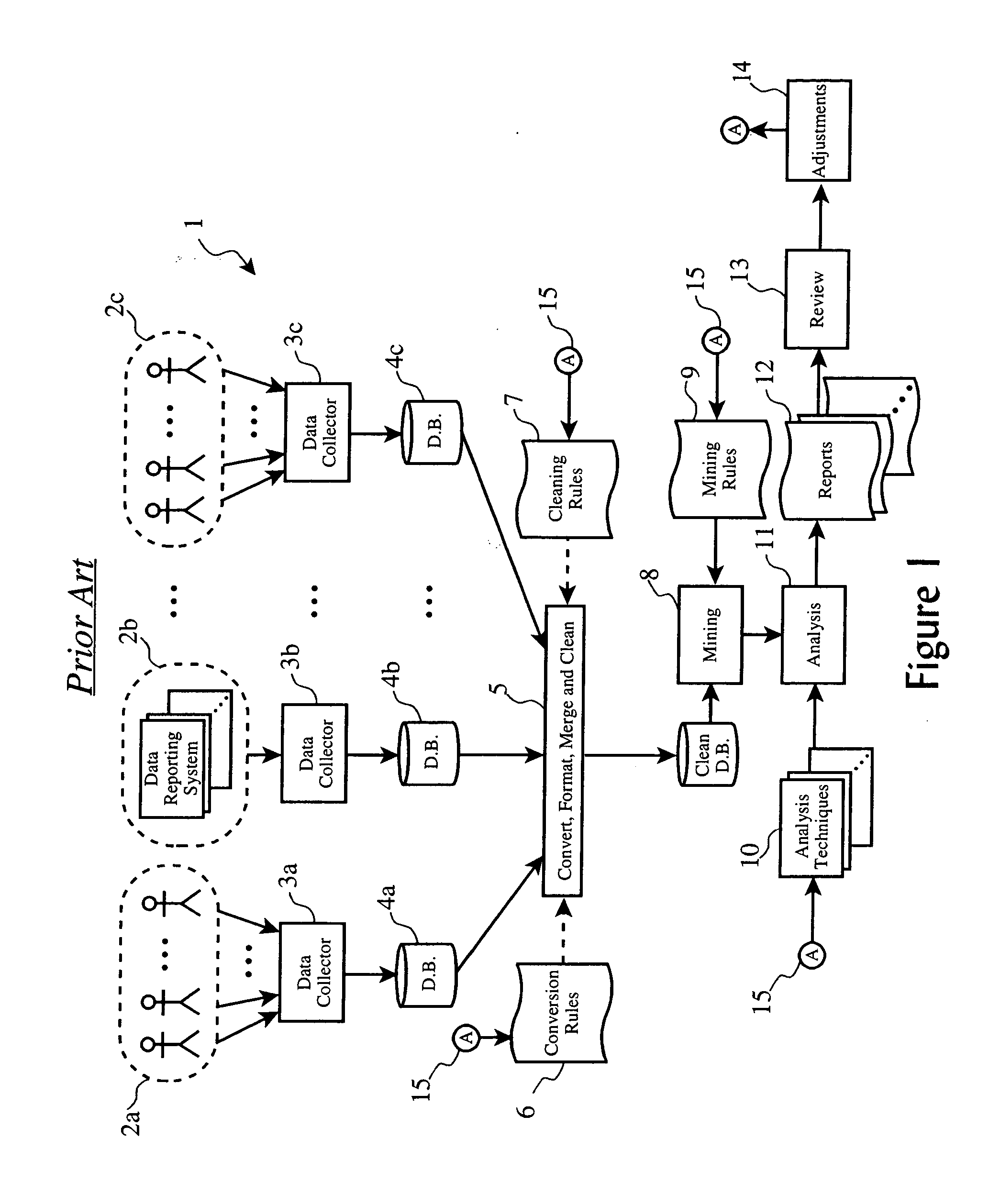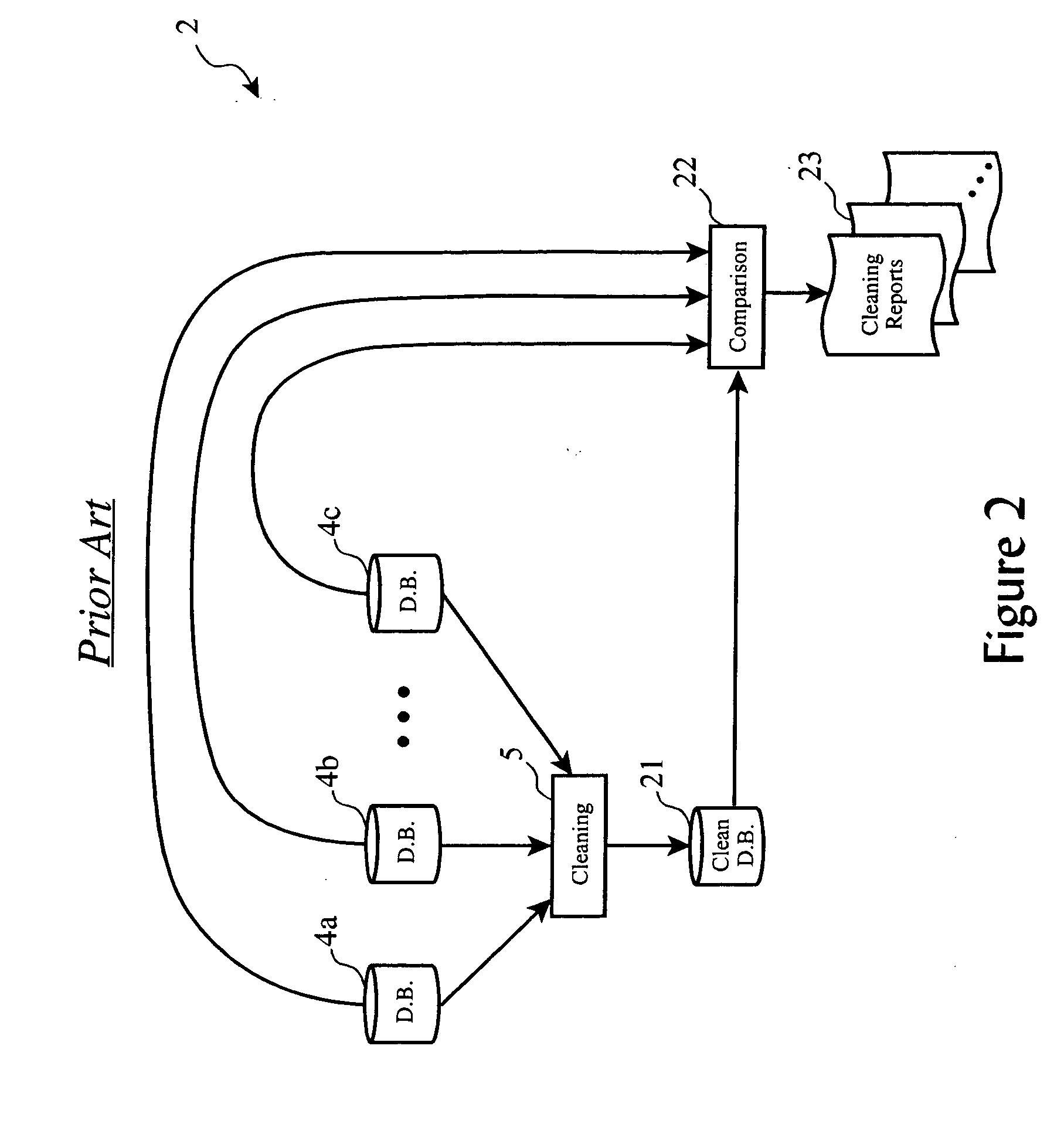Alert flags for data cleaning and data analysis
a technology applied in the field of alert flags for data cleaning and data analysis, can solve the problems of incorrect statistical weighting, duplicate or contradictory records in the unified data set, incomplete initial raw data, etc., and achieve the effect of properly weighing the importance of decision making and more weight in decision making
- Summary
- Abstract
- Description
- Claims
- Application Information
AI Technical Summary
Benefits of technology
Problems solved by technology
Method used
Image
Examples
Embodiment Construction
The present invention is preferrably realized as a software program, module or method which may be called or instantiated by other programs such as existing data mining software suites. It will be readily recognized, however, that alternate embodiments such as inline code for data mining suite, or even realization as hard logic, may be made without departing from the scope of the present invention.
We first present a general discussion of computing platforms suitable for realization of the invention according to the preferred embodiment. These computing platforms include enterprise servers and personal computers (“PC”), as well as portable computing platforms, such as personal digital assistants (“PDA”), web-enabled wireless telephones, and other types of personal information management (“PIM”) devices. As the computing power and memory capacity of the “lower end” and portable computing platforms continues to increase and develop, it is likely that they will be able to execute the...
PUM
 Login to View More
Login to View More Abstract
Description
Claims
Application Information
 Login to View More
Login to View More - R&D
- Intellectual Property
- Life Sciences
- Materials
- Tech Scout
- Unparalleled Data Quality
- Higher Quality Content
- 60% Fewer Hallucinations
Browse by: Latest US Patents, China's latest patents, Technical Efficacy Thesaurus, Application Domain, Technology Topic, Popular Technical Reports.
© 2025 PatSnap. All rights reserved.Legal|Privacy policy|Modern Slavery Act Transparency Statement|Sitemap|About US| Contact US: help@patsnap.com



